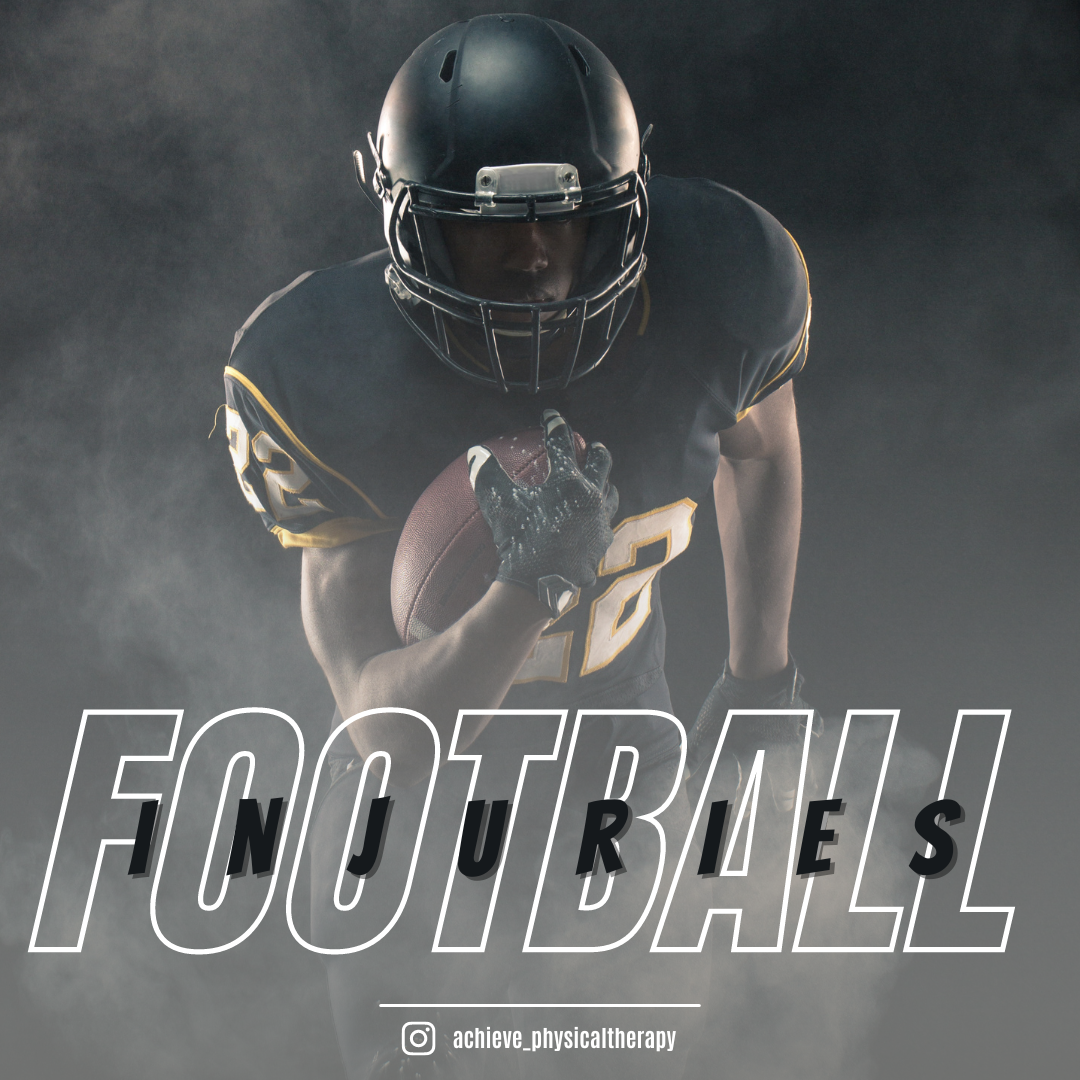
Football is one of the most popular but dangerous sports played in the United States today. According to the mom’s Team, an estimated 2 million injuries among high school students occur every year, leading to 500,000 doctor visits and 30,000 hospitalizations. Of these injuries, they estimated 446,715 (14.9%) are severe enough to prevent an athlete from participating in their sport for 21 or more days, with almost 6 in 10 (56.8%) of these injuries resulting in a player being medically ineligible for the rest of the season.
Click here to read more from momsTeam.
Injuries can occur at any time, during a game, or at practice. The most commonly injured part of the body during football is the knees.
Common Knee Injuries:
- Anterior cruciate ligament (ACL) – located in the center of the knee and controls forward movement and rotation of the shinbone.
- Posterior cruciate ligament (PCL) – also located in the center of the knee, prevents the shin from sliding backward.
- Medial collateral ligament (MCL) – located on the inside of the knee, gives stability to the inside of the joint.
- Lateral collateral ligament (LCL) – located on the outside of the knee, gives stability to the outer knee
Common Leg Injuries:
- Muscle strain: this is very common in football players. This is also referred to as a pulled muscle or a torn muscle. The most common muscle strains occur in the hamstrings and quadriceps at the front of the thigh.
- Hamstring strains: this affects the muscle that connects the back of your knees to the bottom of your buttocks. Symptoms include sharp pain at the back of the thigh.
- Shin splints: will result in pain in the front of the lower leg. Pain will result in inflammation of the muscles, tendons, and bone tissue around the tibia, or shinbone. This condition can lead to more serious complications if not properly treated with ice, rest, and stretching.
- Achilles tendonitis: can cause inflammation, pain in the back of the ankles, and potentially the Achilles tendon degenerating. Athletes can usually still play, but it will cause discomfort and influence how they perform. Symptoms can be acute that get better within a few weeks or long-lasting, preventing them from playing.
Common Foot Injuries:
- Ankle sprains – ankle sprains are very common. Symptoms can vary from mild to severe. The more serious the injury, the slower the healing will be if the player keeps playing.
- Metatarsal stress fractures – this is a very fine break in one of the bones in the foot. They are long and slender bones that are located between the middle of your foot and your toes and give your foot its arch.
Common Shoulder Injuries:
- Rotator cuff strains – the shoulder joint is supported by the rotator cuff. Typically, the pain will happen suddenly and run down the arm. Some people will experience a tearing sensation.
You can read more about how physical therapy can help with rotator cuff pain here.
Concussions:
The likelihood of football players suffering a concussion is very high. A concussion is a head injury that alters how the brain normally functions. According to the National Collegiate Athletic Association (NCAA) football players – even those in high school – have a 75% chance of suffering a concussion. In football, concussions usually occur during a tackle. While concussions are not usually life-threatening, they are still very serious. Athletes should always watch for changes in how they feel and act following a hit to the head.
You can read more about concussions and the most common symptoms here.
Overuse Injuries:
- Jumper’s knee: this causes pain in the tendon that attaches the kneecap to the shinbone. This is considered an overuse injury brought on by repetitive strain.
Physical Therapy for Football Injuries:
Many football injuries can be treated by a licensed physical therapist. Rather than dealing with the pain and expenses of getting surgery, physical therapy should be the first treatment of choice. Our physical therapist will design a specific program depending on the location and severity of an athlete’s injury. These programs will help the athlete regain their full range of motion as well as build up strength in the muscles that were affected by the injury. If surgery is required, physical therapy can also be done after. Physical therapy after surgery can help players recover from their procedures. Our physical therapist will not only help manage an individual’s pain but will also teach them the proper way to prevent future injuries.
